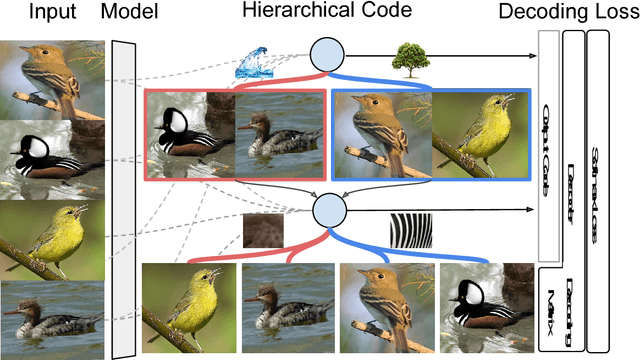Miguel A. Bautista
Beyond One-hot Encoding: lower dimensional target embedding
Jun 28, 2018



Abstract:Target encoding plays a central role when learning Convolutional Neural Networks. In this realm, One-hot encoding is the most prevalent strategy due to its simplicity. However, this so widespread encoding schema assumes a flat label space, thus ignoring rich relationships existing among labels that can be exploited during training. In large-scale datasets, data does not span the full label space, but instead lies in a low-dimensional output manifold. Following this observation, we embed the targets into a low-dimensional space, drastically improving convergence speed while preserving accuracy. Our contribution is two fold: (i) We show that random projections of the label space are a valid tool to find such lower dimensional embeddings, boosting dramatically convergence rates at zero computational cost; and (ii) we propose a normalized eigenrepresentation of the class manifold that encodes the targets with minimal information loss, improving the accuracy of random projections encoding while enjoying the same convergence rates. Experiments on CIFAR-100, CUB200-2011, Imagenet, and MIT Places demonstrate that the proposed approach drastically improves convergence speed while reaching very competitive accuracy rates.
Deep Unsupervised Learning of Visual Similarities
Feb 22, 2018



Abstract:Exemplar learning of visual similarities in an unsupervised manner is a problem of paramount importance to Computer Vision. In this context, however, the recent breakthrough in deep learning could not yet unfold its full potential. With only a single positive sample, a great imbalance between one positive and many negatives, and unreliable relationships between most samples, training of Convolutional Neural networks is impaired. In this paper we use weak estimates of local similarities and propose a single optimization problem to extract batches of samples with mutually consistent relations. Conflicting relations are distributed over different batches and similar samples are grouped into compact groups. Learning visual similarities is then framed as a sequence of categorization tasks. The CNN then consolidates transitivity relations within and between groups and learns a single representation for all samples without the need for labels. The proposed unsupervised approach has shown competitive performance on detailed posture analysis and object classification.
* arXiv admin note: text overlap with arXiv:1608.08792
CliqueCNN: Deep Unsupervised Exemplar Learning
Aug 31, 2016



Abstract:Exemplar learning is a powerful paradigm for discovering visual similarities in an unsupervised manner. In this context, however, the recent breakthrough in deep learning could not yet unfold its full potential. With only a single positive sample, a great imbalance between one positive and many negatives, and unreliable relationships between most samples, training of Convolutional Neural networks is impaired. Given weak estimates of local distance we propose a single optimization problem to extract batches of samples with mutually consistent relations. Conflicting relations are distributed over different batches and similar samples are grouped into compact cliques. Learning exemplar similarities is framed as a sequence of clique categorization tasks. The CNN then consolidates transitivity relations within and between cliques and learns a single representation for all samples without the need for labels. The proposed unsupervised approach has shown competitive performance on detailed posture analysis and object classification.
 Add to Chrome
Add to Chrome Add to Firefox
Add to Firefox Add to Edge
Add to Edge